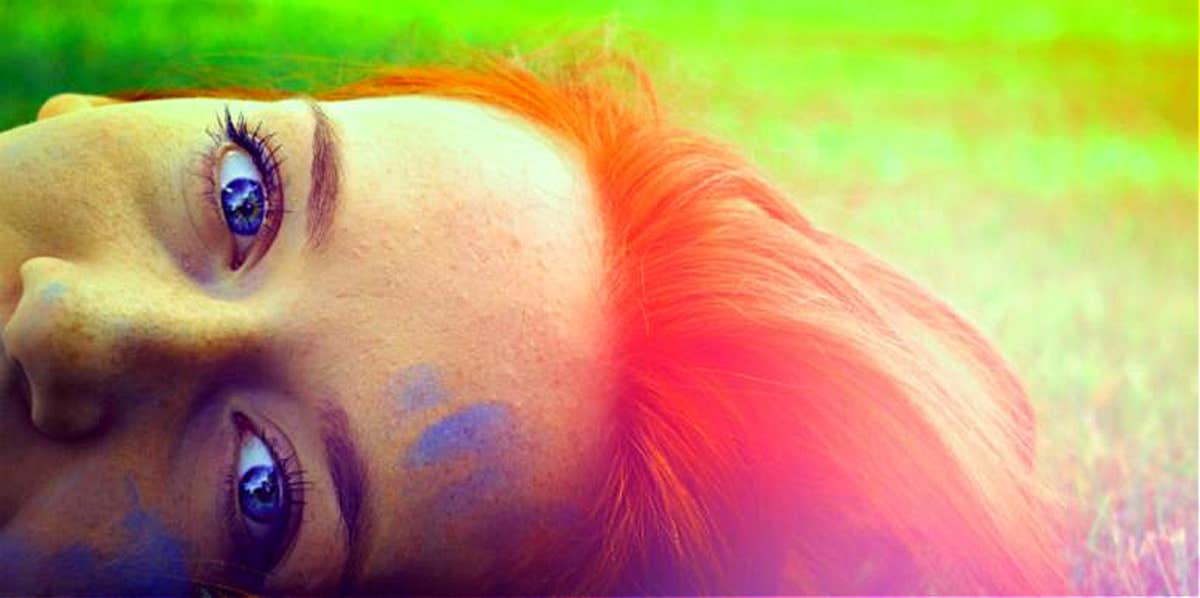The Magical Things That Happen When You Allow Your Brain To 'Trip' Naturally
The natural (and legal!) way to open your mind.
 Getty
Getty Recent years have seen an explosion of research into the therapeutic uses of psychedelic drugs. Psychedelic drugs clearly can help with anxiety, especially end-of-life anxiety, depression and drug addiction.
However, in most cases, psychedelics are illegal. Without special connections or the right kinds of friends it is not easy to get safe, reliable LSD or mescaline. Neither your local pharmacy nor even your local dispensary will stock them.
Finding a physician or qualified clinician to oversee your treatment with psychedelics is, at this point, extremely rare.
But do we even need psychedelics? Don’t we trip every night when we dream?
Psychedelic drugs have been described as “oneirogenic,” from the Greek oneiros, meaning dream and to create. Dreams, with their strange illogical plots, weird imagery and powerful emotions, resemble natural and legal psychedelic trips.
What psychedelic trips and dreams have in common
Hobson, the scientist who discovered REM sleep, described the psychedelic state as an imposition of a REM-like state on the waking brain. Both REM sleep and psychedelic states involve the neurotransmitter serotonin. In both states, the brain filters that organize perceptions are blocked.
The world appears, raw and powerful, colored by our thoughts and feelings. As the great scholar and psychedelic pioneer described it, the “doors of perception” are opened.
Brain imagery becomes more vivid to the point where its intensity matches that of waking reality. The rock band the Doors based their name on that Aldous Huxley quote.
Brain connectivity is enhanced in both dream and psychedelic states. The cortex, the highest thinking part of the brain, wildly freelances in a hyper-associative state.
In both bad dreams and trips, emotions are more vivid. The brain experiences a flood of emotions and associated memories, often including fear.
Bad trips and bad dreams can both be therapeutic
My first psychedelic trip was a bad one.
I was sure that I had ingested demon blood, and I found myself, terrified, in a part of my childhood home where a tragedy had occurred.
Since then, I have talked to many trip guides, and I have learned that bad trips, like bad dreams, can be therapeutic.
In a trip, like in a dream, fears and traumatic memories can be processed in a different way, leading to healing.
William Dement, one of the pioneers in dream research, had a terrifying nightmare about lung cancer. He had been a chain smoker until he had that dream; after the dream, he never smoked another cigarette.
Psychedelics, like dreams, enhance certain aspects of cognition. Creative problem-solving and associative and symbolic thinking are enhanced. Imagery in both dreams and trips is measurably bizarre and there can be depersonalization and loss of control due to the deactivation of the frontal control regions of the brain.
Tripping and dreaming can both aid creativity
Both trips and dreams have yielded creative insights. Paul McCartney’s song “Yesterday” was the product of a dream, as was the classic book Frankenstein.
The Twilight series of books and movies were inspired by a dream, as were some of Einstein’s theories about relativity. One of the great poems in English literature, Coleridge’s “Kubla Khan” was inspired by a drug-induced vision, as was Alice in Wonderland.
Of course, not every bedroom dream or basement trip will produce a work of art.
The chord sequences McCartney dreamed of need to be structured and crafted and matched with lyrics. Mary Shelley, who wrote Frankenstein, worked for years transforming her dream vision into a novel.
Dreams and trips can provide inspiration — but are not shortcuts to producing art or science.
Dreams and trips can both inspire visions
In contrast to a dream, in a trip, the brain changes occur while awake, with the “doors of perception” wide open. Eyes closed; the tripping brain hallucinates; eyes open, the brain experiences sensory input with intense clarity. A tree is suddenly amazingly and more perfectly a tree than ever before.
In this hyperconnected state, the mind also fills in blank surfaces, like the blank screens of phones or televisions; on my bad trip, I saw demons when I looked at the blank screen of my phone. Fortune tellers and witches understand this, they use the blank surfaces of bodies of water or crystal balls to "skry" or have visions.
But dreams and trips differ in their sense of self. Trips often involve a dissolution of the sense of self and a feeling of self-transcendence.
In dreams, a representative of the dreamer is usually vividly present as the “experiencer” of the dream, but the clarity of conscious awareness is typically absent.
An exception to this generalization can be seen in lucid dreams, where the dreamer experiences a kind of split or meta-awareness, which in some ways phenomenologically resembles the feelings of transcendence that occurs with psychedelics.
As a culture, we like shortcuts and quick fixes.
We look for artificial trips with psychedelics, forgetting that we trip every night. With some effort, we can learn to understand our dreams and learn from these free, nightly — and legal — trips.
Greg Mahr, MD is a psychiatrist and student of dreams in Detroit. He is part of the Henry Ford Hospital sleep research program.

